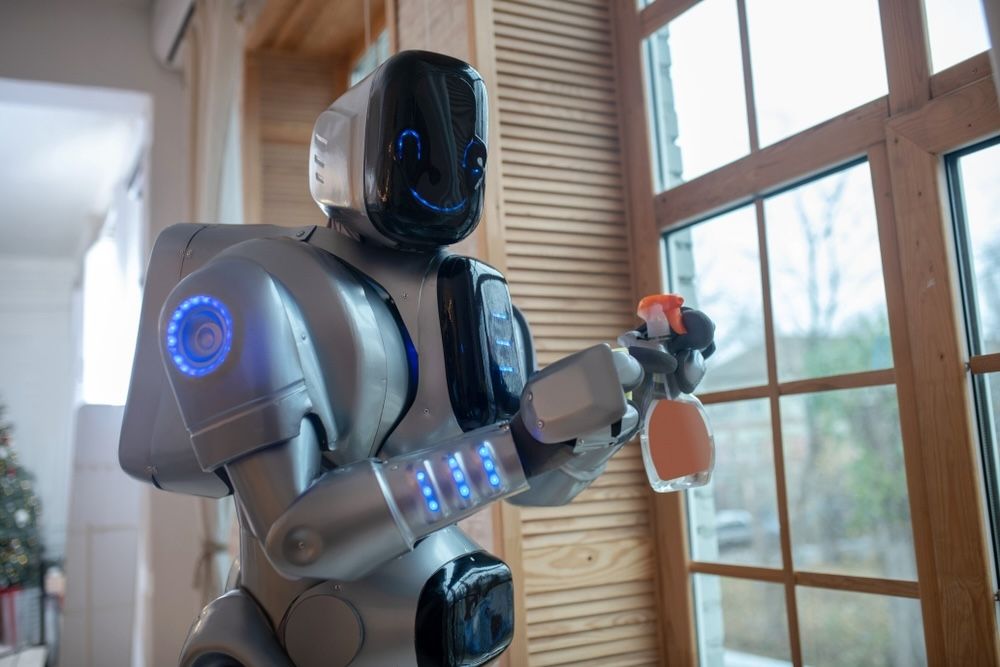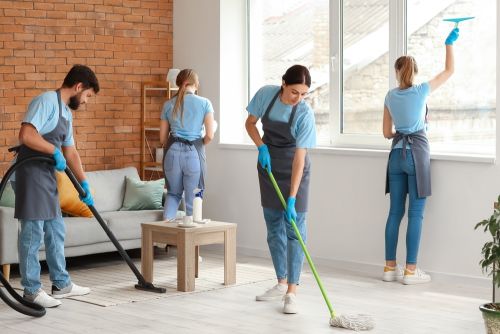Exploring the Role of Robotics and Automation in the Future of the Cleaning Industry

As technology relentlessly advances, it reshapes the landscapes of countless traditional industries. Among these, the cleaning industry stands out as a prime example of profound transformation driven by technological integration. Historically characterized by manual labor and relatively low-tech tools, this sector is now on the frontier of innovation, with robotics and automation at the helm.
The advent of sophisticated technologies is not just a trivial upgrade—it represents a fundamental shift in how cleaning services operate. By incorporating robotics and automation, these services are not only enhancing their efficiency but are also achieving greater sustainability and cost-effectiveness. For instance, robotic cleaners can operate autonomously without supervision, allowing for around-the-clock cleaning schedules without additional labor costs. Moreover, these machines are designed to optimize the use of resources, such as electricity and cleaning solutions, reducing waste and environmental impact.
This transformation is underpinned by a surge in investment and interest from technology developers and commercial entities eager to capitalize on and contribute to the burgeoning market. Market research indicates that automation technology in cleaning is being rapidly adopted across various settings, from domestic homes to large commercial complexes, reflecting a broader trend towards intelligent automation in service industries.
In this article, we will explore how robotics and automation are revolutionizing the cleaning industry. We'll delve into current trends, examine case studies where technology has significantly boosted productivity and sustainability, and discuss the future implications of these technological advancements. Supported by compelling data and insightful industry analysis, this exploration will highlight the pivotal role that technology plays in transforming the cleaning industry into a model of efficiency and innovation.
The Rise of Robotics in Cleaning
The integration of robotics into the cleaning industry is revolutionizing the way cleaning tasks are approached, enhancing both the efficiency and effectiveness of these services. A striking testament to this transformation is reflected in the financial projections: according to a MarketsandMarkets report, the cleaning robot market, valued at $6.2 billion in 2021, is anticipated to quadruple to $24.8 billion by 2026, boasting a compound annual growth rate (CAGR) of 22.8%. This robust growth is indicative of the increasing reliance on robotic solutions across various cleaning domains.
Diversity of Applications
Robotics in cleaning spans several applications, each addressing unique challenges of the environment they are designed for:
Floor Cleaning: Robotic floor cleaners are increasingly common in both commercial and residential settings. Equipped with advanced sensors and AI algorithms, these robots can navigate complex spaces, avoid obstacles, and adapt to different surface types without human intervention. Their ability to operate autonomously allows businesses to maintain continuous cleaning cycles, particularly in high-traffic areas like malls, airports, and office buildings, thus ensuring a consistently clean environment.
Window Cleaning: Robotic window cleaners have transformed a traditionally risky and labor-intensive task. These robots use suction technology and sophisticated edge detection to move across glass surfaces, dramatically reducing the need for human cleaners to work at dangerous heights. This not only improves safety but also ensures a streak-free cleanliness at a much faster pace.
Pool Cleaning: Robotics has also made significant inroads into pool maintenance. Autonomous pool cleaning robots can scrub, vacuum, and filter water independently, handling everything from small residential pools to large public facilities. These robots can systematically cover the entire pool area, ensuring thorough cleaning with minimal human effort.
Leading Innovators
Companies such as iRobot and Ecovacs are at the forefront of residential cleaning robotics. iRobot’s Roomba and Ecovacs’ Deebot are examples of how these technologies have penetrated the home, offering consumers the convenience of maintaining clean floors without manual labor. These devices not only vacuum but also mop, featuring programmable schedules and smart home connectivity for enhanced user convenience.
Technological Advancements
The sophistication of these robotic cleaners is largely due to advancements in artificial intelligence and machine learning. Robots are now capable of learning from their environments, improving their cleaning patterns over time, and even making predictive decisions to enhance cleaning efficiency. For example, some models can detect the level of dirt in different areas and allocate more time to dirtier spots, while others can automatically return to their charging stations when low on battery, resuming cleaning once recharged without any human intervention.
Impact on Productivity
The impact on productivity is profound. In commercial settings, where cleanliness is paramount, robots can work alongside human staff, handling repetitive or physically demanding tasks, which allows the human workforce to focus on more intricate or customer-focused responsibilities. This synergy between human workers and robots leads to a more effective workforce and can significantly boost the overall productivity of cleaning operations.
Automation in Cleaning Processes
While robotics significantly enhances the physical execution of cleaning tasks, automation in the cleaning industry encompasses a broader spectrum, particularly in operational management and device optimization. This integration of sophisticated software and system automation is reshaping the backend of cleaning services, leading to improved efficiency and customer engagement.
Operational Efficiency Through Automated Systems
Automated scheduling and customer management systems are revolutionizing how cleaning companies handle their day-to-day operations. These systems automate crucial but time-consuming tasks such as appointment booking, scheduling of cleaning sessions, and dispatching of cleaning personnel. By using software solutions like ServiceTitan or Jobber, companies can reduce manual input errors, ensure optimal allocation of resources, and maintain tight control over their operations. This leads to a significant reduction in overhead costs and operational inefficiencies.
Additionally, customer relationship management (CRM) systems are integrated to enhance interaction with clients. These platforms can automate communications, send reminders and follow-ups, and solicit feedback after services, thereby elevating the customer service experience. This technology not only retains clients by making them feel valued but also helps in attracting new customers through efficient service and positive reviews.
IoT and Smart Device Integration
The Internet of Things (IoT) brings a new dimension to automation in the cleaning industry by connecting cleaning devices to the internet. IoT technology allows for the remote monitoring and control of devices, such as commercial dishwashers, washing machines, and even HVAC systems. For instance, IoT-enabled washing machines can adjust wash cycles and detergent use based on the load and soil level, optimizing both water and energy consumption. This not only enhances the efficiency of the cleaning process but also supports sustainability initiatives by reducing resource wastage.
IoT devices can collect and analyze real-time data to make energy-saving decisions, such as adjusting temperatures or operational times based on peak and off-peak energy rates. This capability not only helps in reducing operational costs but also aligns with global efforts to reduce carbon footprints in industrial operations.
Advanced Data Utilization
Beyond immediate operational adjustments, IoT and automation technologies enable the collection of vast amounts of data, which can be analyzed to further refine and improve cleaning processes. For example, data collected from sensors in commercial buildings can indicate high-traffic areas that require more frequent cleaning. Similarly, water quality sensors can prompt adjustments in cleaning agents or methods, ensuring optimal cleaning while adhering to health standards.
Integration Challenges and Solutions
While the potential benefits of automation in cleaning processes are vast, integration poses challenges, including the initial cost of setup and the need for ongoing maintenance and updates. However, the long-term savings and improvements in service quality can justify these investments. Training staff to utilize these technologies effectively is also crucial. As such, companies are increasingly investing in training programs to ensure their teams are adept at leveraging these new tools.
Environmental Impact
The integration of robotics and automation into the cleaning industry is not only revolutionizing efficiency and effectiveness but also playing a crucial role in environmental conservation. These technologies are designed to optimize resource use and reduce waste, which is pivotal in minimizing the environmental footprint of cleaning operations.
Resource Optimization
One of the primary environmental benefits of using automated cleaning systems and robotics is the significant reduction in water and energy consumption. Traditional cleaning methods can be resource-intensive, often using more water and energy than necessary. In contrast, automated systems are equipped with sensors and programmed to use only the required amount of water and energy to complete tasks effectively. For example, robotic floor cleaners can adjust their cleaning intensity based on the level of dirt or contamination detected, ensuring that no excess water or energy is consumed during the process.
Furthermore, the precision of these devices in dispensing cleaning agents ensures that the use of chemicals is minimized. This not only reduces the chemical runoff into the environment but also decreases the exposure of building occupants and cleaning staff to potentially harmful substances. By optimizing the use of resources, these technologies help in promoting a more sustainable and environmentally friendly cleaning approach.
Carbon Footprint Reduction
Another significant environmental benefit of adopting robotics and automation in cleaning is the reduction of the carbon footprint associated with these operations. Traditional cleaning methods often involve multiple rounds of manual work, which can be inefficient and lead to higher carbon emissions, especially when factoring in the transportation of workers and supplies. In contrast, electrically powered robots provide a cleaner alternative. Many of these robots are designed to operate on electricity, which can potentially be supplied through renewable sources such as solar or wind power, further reducing the carbon footprint.
Moreover, as battery technology advances, the efficiency of these electric robots improves, allowing for longer cleaning sessions per charge and reducing the frequency and energy consumption associated with recharging. The shift towards electrically powered robots, particularly those that harness renewable energy, represents a significant step towards greener cleaning methodologies.
Long-Term Environmental Gains
The adoption of these technologies also encourages broader environmental gains. For instance, improved cleaning efficacy leads to healthier indoor environments, reducing the need for frequent deep cleans that often involve harsh chemicals. Additionally, as businesses adopt these green technologies, they contribute to a larger market demand for sustainable solutions, which can accelerate advancements in eco-friendly technologies and practices across industries.
Industry Example and Data
An example of this in action can be seen in large facilities like airports and hospitals, where automated cleaning systems have been implemented to manage large areas efficiently. These facilities have reported not only better cleaning results but also a measurable decrease in water and energy usage. Data from such implementations indicate that automated systems can cut water and energy use by up to 30%, compared to traditional methods.
Economic and Social Implications
The integration of robotics and automation into the cleaning industry heralds significant changes, not only in how cleaning tasks are performed but also in the broader economic and social landscapes. These technological advancements, while promising numerous benefits, also bring about challenges and opportunities that need careful management.
Job Dynamics and Displacement
One of the most immediate economic concerns with the rise of automation is job displacement. As robots and automated systems become capable of performing tasks traditionally done by humans, there is a potential for significant shifts in employment within the industry. According to a report by the World Economic Forum, while automation will displace many jobs, it is also expected to create new ones, particularly in sectors like technology and service management. In the cleaning industry, this could mean fewer jobs in traditional cleaning roles but an increase in jobs related to robotics maintenance, programming, and system oversight.
The transition may not be seamless, as it requires workers to adapt to new roles that demand different skills. For instance, a manual cleaner might need training in robot operation or maintenance, highlighting the need for substantial investments in training and education.
Opportunities for Workforce Development
To address the challenges of job displacement, there is a growing need for comprehensive training programs and educational initiatives. These programs are essential to equip the existing workforce with the necessary technical skills to operate, maintain, and manage automated cleaning systems. Community colleges, vocational schools, and even in-house training programs offered by employers can play a significant role in facilitating this transition.
Moreover, as the technology evolves, there is a continuous need for skilled personnel who can not only operate these systems but also innovate and improve them. This opens up a pathway for higher-value jobs in the industry, potentially increasing wages and improving job satisfaction.
Social Benefits and Public Health
Beyond economic implications, the enhancement of cleaning efficiency through automation has profound social benefits. Cleaner environments significantly contribute to public health. For instance, in healthcare settings, automated cleaning systems can help maintain high standards of hygiene, reducing the risk of hospital-acquired infections, which are a major concern worldwide.
In public spaces like airports, train stations, and schools, increased cleaning efficiency can help prevent the spread of diseases. During times of health crises, such as the COVID-19 pandemic, the role of efficient, frequent cleaning has been highlighted as crucial in managing public health. Automation can ensure that these high standards are not only met but maintained consistently without placing additional strain on human workers.
Environmental Health and Community Well-being
Moreover, the shift towards greener cleaning technologies and reduced chemical use contributes to better indoor air quality and environmental health, which benefits everyone in the community. This is particularly important in urban areas, where pollution and poor air quality are persistent problems.
Endnotes
Robotics and automation are revolutionizing the cleaning industry by introducing unprecedented levels of operational efficiency and productivity. These technologies enable continuous and consistent cleaning with minimal human supervision, allowing operations like overnight cleaning in public spaces and commercial establishments. This shift not only enhances the cleanliness of environments frequented by the public but also dramatically reduces labor costs and error rates associated with manual cleaning.
The environmental impact of integrating robotics and automation into cleaning practices is significant. These technologies help minimize the use of water, energy, and harsh chemicals, which aligns with global sustainability efforts and sets new standards within the industry for environmental responsibility. As technology evolves, it will increasingly support the industry's transition to green and sustainable practices, further reducing the ecological footprint of cleaning operations.
Improved cleaning efficiency through automation has profound public health implications. Enhanced cleaning standards in critical environments such as hospitals, schools, and airports can significantly reduce the spread of diseases. Moreover, the transition towards automation presents opportunities for workforce development, shifting workers from repetitive tasks to more skilled roles involving technology management and maintenance, thereby improving job quality and engagement.
The path toward automation in cleaning is fraught with challenges, including the high costs of technology adoption, the need for significant investment in workforce retraining, and the potential for economic disruption within the traditional cleaning industry. These challenges require thoughtful strategies and policies to ensure a smooth transition, emphasizing the importance of stakeholder engagement, regulatory support, and public-private partnerships to foster an ecosystem conducive to technological advancement.
Looking forward, the widespread integration of advanced technologies in cleaning processes promises a more innovative and efficient industry. This evolution positions the cleaning industry as a leader in technological adoption, paving the way for other sectors to follow. Embracing these changes will not only transform industry practices but also contribute to broader societal goals of sustainability and public health, heralding a new era of global impact and improvement.
Topics
Check more articles on our blog

Yourself or Professional: Pros and Cons of Hiring a Home Cleaner

Top 10 Cleaning Companies in Frankfurt am Main, Germany: Reliable Services for Homes and Offices

Top 10 Cleaning Companies in Cologne, Germany
